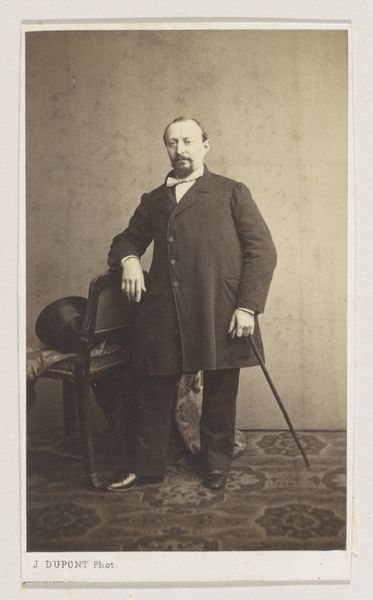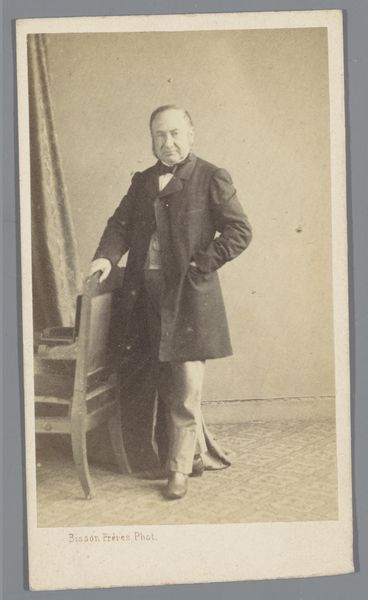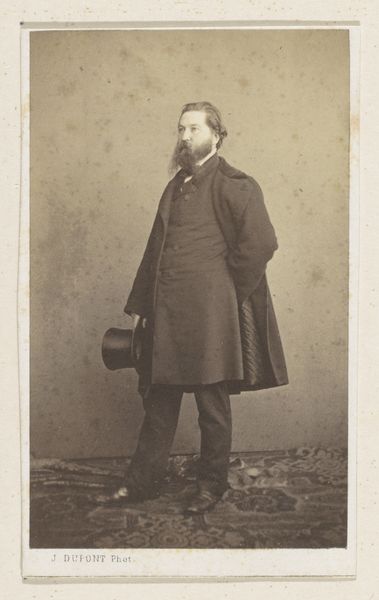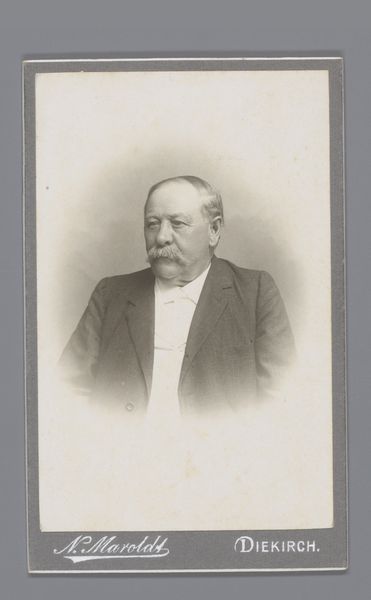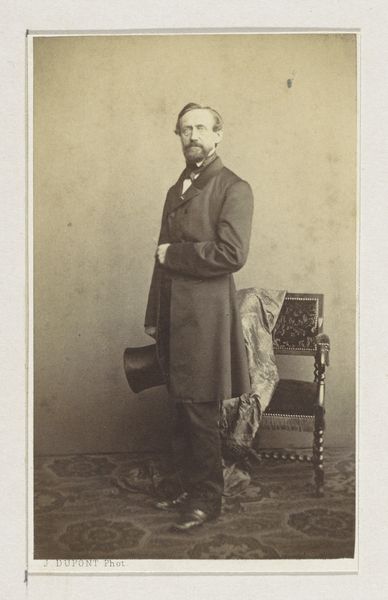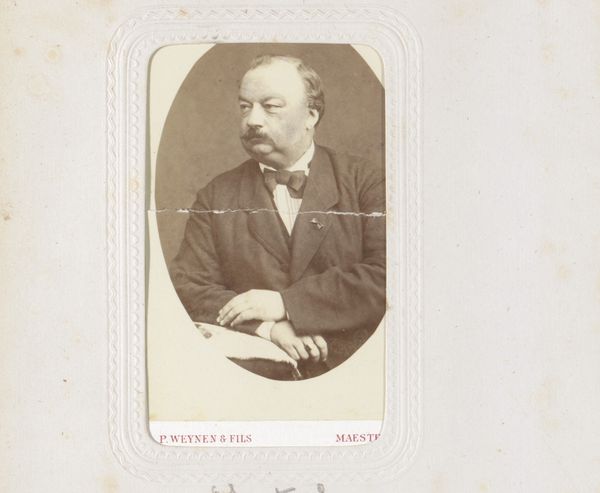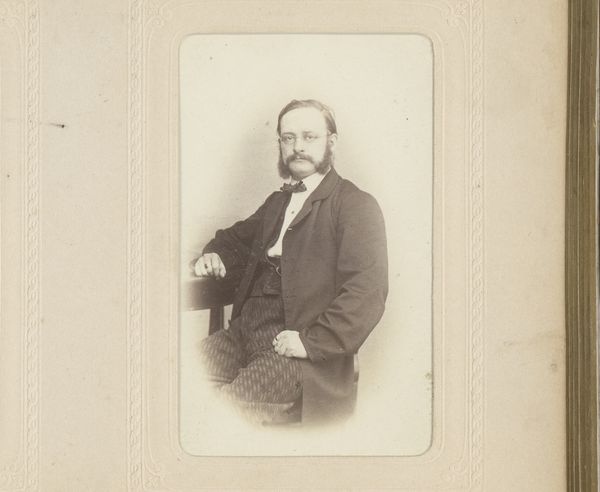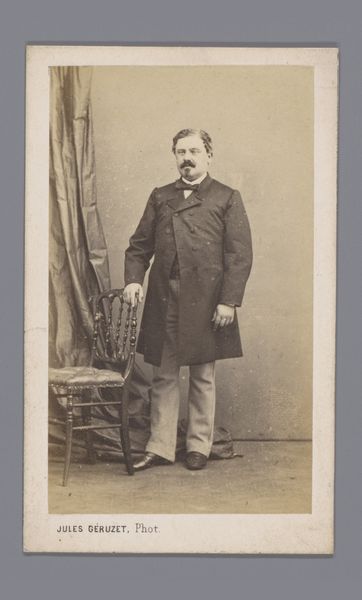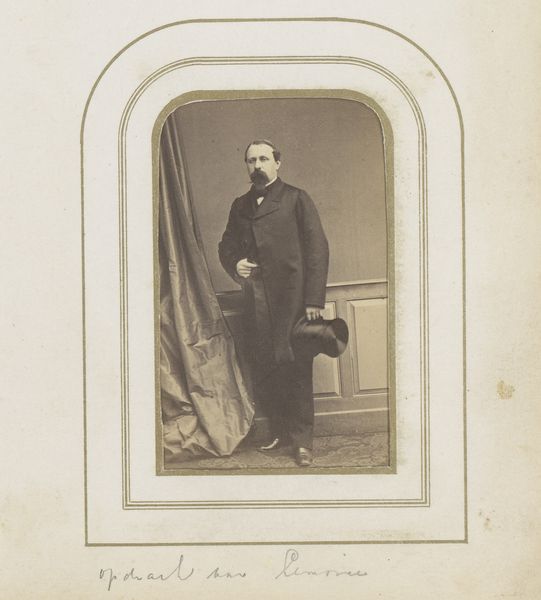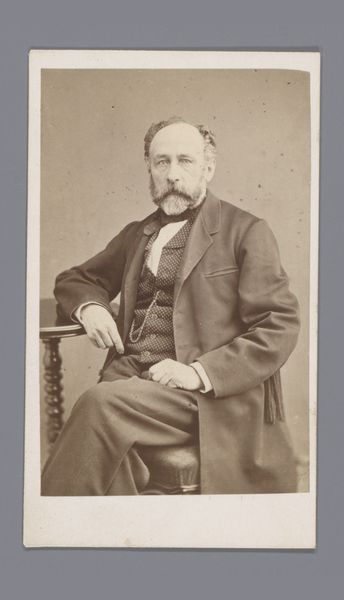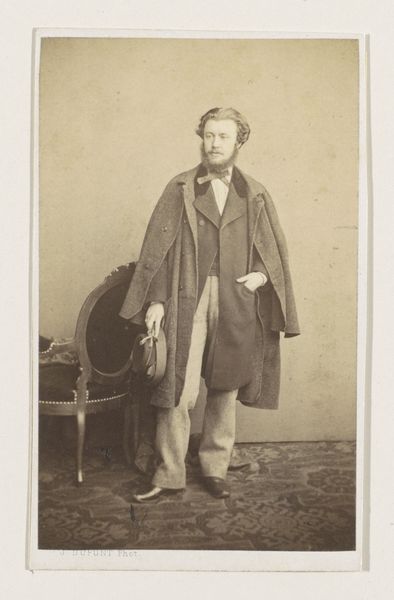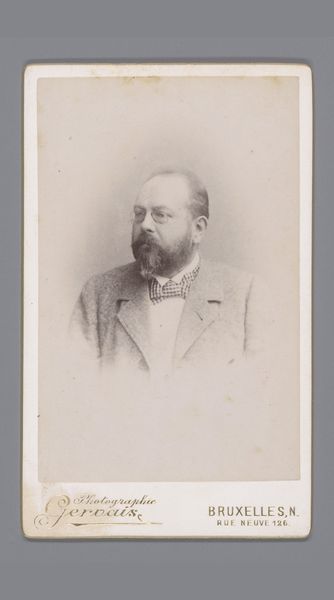
photography, albumen-print
#
portrait
#
photography
#
historical photography
#
19th century
#
pencil work
#
albumen-print
#
realism
Dimensions: height 87 mm, width 53 mm
Copyright: Rijks Museum: Open Domain
Editor: This albumen print, "Portret van een staande man voor een bergdecor," made by Baldi & Würthle between 1860 and 1880, really evokes a sense of formality and status. He’s posed against a backdrop that seems almost like a painted stage set. What can you tell me about the historical context of this kind of portraiture? Curator: These kinds of portraits became increasingly popular and accessible in the mid-19th century, shaping ideas about identity and representation. The painted backdrop—often of idealized landscapes—provides context. But it's crucial to ask: who was this man and what did this image signify about his aspirations and role in society? Think about the rising middle class and their desire for visibility and a sense of permanence. Editor: So, it's about projecting an image, a desired identity? He seems rather prosperous and self-assured, judging by his attire. Was photography becoming a tool for social mobility, or perhaps reinforcing existing hierarchies? Curator: Precisely! The very act of commissioning a portrait, particularly one incorporating symbols of leisure and success, spoke volumes. Consider also how the photograph itself functions as a commodity and how its circulation helped to solidify cultural values around respectability and achievement. Why the mountain decor behind the model instead of anything more urban? Editor: That’s a great point! The mountain scene could signal a connection to nature, or maybe a sense of grandeur or even adventure… it certainly feels performative, a very constructed image. Curator: Indeed. It represents the democratization of portraiture and highlights its constructed nature and performativity. And how these images circulate within particular social networks further amplified their influence. The intersection of art, technology, and social status in the 19th century, makes one think. Editor: It makes you think about how carefully crafted even seemingly "realistic" portrayals really are! Curator: Exactly. It makes one consider the photographer's power to define and distribute visual markers of social identity. I learned some details that were eluding me prior to the chat. Thank you.
Comments
No comments
Be the first to comment and join the conversation on the ultimate creative platform.
